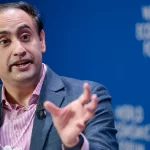In an unprecedented move, Trump has launched tariffs on over 180 countries. This is worse than his last term and depicts a reversal of American politics where it once initiated the era of liberal trade in the world. For India, the tariff rate was 27 per cent, lesser compared to other Asian countries but high enough to impact Indian exports to the US including automobiles, apparel, API, gems and jewellery.
The stock market is still facing the effects of this tariff war, with Dow Industrial recording a 1450-point drop and Nasdaq plunging 5.8 per cent. The dollar has also seen an instant fall against Japanese and European currencies. While it also affected oil prices. Trump’s extremist policies aim to boost domestic manufacturing and correct the wrong done by the previous administration. President Trump said that the tariffs will open doors for a “new golden age” for America.
A 10 per cent blanket tariff has been applied to all countries with some extra tariffs for countries in what has been reported as the worst “tariff war” started by Trump. Western partners like the UK and EU were also included in the slabs but the major focus was always on the South Asian rival China which has been hit with a 34 per cent tariff. This makes the total tariff on Chinese goods reaching the US face a tariff as huge as 54 per cent.
The tariffs have impacted India less than other Asian countries For instance Thailand had been hit by 36 per cent, Indonesia 32 per cent, and Laos 48 per cent. However, despite what was predicted due to improved relations between India and the US, the country has to face higher slabs of tariffs.
Delliote said in a remark on India that the country can use this hike to bargain a quick trade deal with the US which has shown interest in partnering with India and called it “a friend.” The firm also said that “Tariff alignment, digital trade facilitation and mutual recognition of standards could form the bedrock of this re-engagement. India can explore the provisions under the executive order, such as tariff modifications based on cooperative steps as an option to engage with the US authorities.”
After what is seen as a post-globalisation era, the path for India is tough but opportunistic and the country can benefit if it focuses on creating trade relations with the US and countries in Europe where it enjoys a trade surplus while also finding venues in the Chinese market where it suffers a major deficit.








